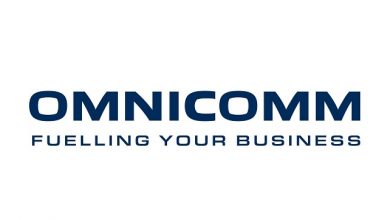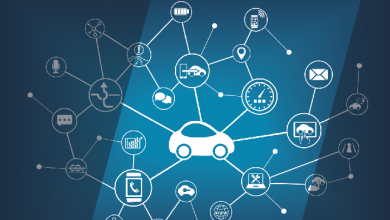Ushering in Fleet Management 2.0 with the next generation of connected mobility with Cavli Wireless

A connected car refers to a technology in vehicles that allows them to communicate with systems outside the vehicle using the internet. Cars need to stay connected to the internet to exhibit all the characteristics of a connected car. Connecting to the internet can be done in two ways, satellite connectivity, and cellular connectivity.
An Embedded connected car system enables a chipset containing a SIM card to get connected to the internet directly. This connectivity enables it to become a full-fletched IoT ecosystem. The IoT ecosystem enables various smart features and applications inside the car to improve customer experience and incorporate safety features.
A connected car provides many features: Vehicle to Vehicle connectivity, entertainment, app-to-car connectivity, navigation system, parking assistance, remote parking, and accident and fault assistance.
Fleet Management System
E-commerce has rapidly changed the freight and package-handling capabilities of businesses globally. As consumers become accustomed to faster deliveries, carriers and shippers are forced to develop a more time-bound supply chain. From fleet makeup to truck manufacturers’ distribution networks and even traffic monitoring for quicker delivery route prediction, the rise of the e-commerce industry is affecting more than many realize.
The main challenges in fleet management include a shortage of skilled drivers. Monitoring drivers’ activities and behavior were never possible before. Increasing fuel consumption and cost has been a big challenge to a Company’s cost-cutting measures. Monitoring the movement of vehicles and assets across the supply chain, especially through hard geographical regions, is critical. Optimum speed limit, route optimization, and checking the overall safety is a tough job for businesses and transporters alike.
Fleet Management systems were introduced to handle vehicle maintenance such as driver management, fuel consumption, and health and safety regulations and significantly reduce the associated risks. The increasing focus on energy consumption and vehicular emissions also emphasized the need for an evolved system. This led to a massive switch to Smart Fleet Management. Earlier traffic delays and hours of vehicle diagnostics were the major cause of latency and waste of time in the system. Fleet management has tried to reduce traffic time and make sure vehicles are in top condition even before it is loaded.
As the competition increased in fleet management, the solutions were upgraded by adopting AI and IoT capabilities such as LiDAR, ultrasonic, and cloud-based communication tools to detect obstacles and resolve them appropriately. With the adoption of Smart Fleet Management solutions across geography, the market is expected to reach around USD 900 billion by 2026. Integrating commercial, technical, and operational requirements, Smart Fleet Management helped the business decision-making process through automation and real-time data monitoring. Consequently, globally governments have extended their support to SFM by regulating the safety standards for vehicle maintenance.
Transition to Smart Fleet Management using IoT
The transition from traditional Fleet Management to Smart IoT-based solutions is triggered by the need to handle and leverage a large volume of data readily available. While the technology helped improve connected mobility, the transition to IoT allowed its users to become proactive. Beyond its ability to manage vehicles across ports, IoT enabled ground staff in fleet hubs to run quick diagnostics, quickly dispatch vehicles, and, most importantly, keep up with the increasing demands. Nonetheless, OEMs attribute the switch to Smart fleet solutions to reducing ownership costs. The global Smart Fleet Management market is driven by the increasing need to adopt Fleet Management analytics to access real-time data. Interestingly, in 2018 with a revenue share of 36%, the Asia Pacific was projected as one of the leading Smart Fleet Management markets due to the regulations regarding transport safety.
Predominantly, operators with a significant fleet focus on implementing Smart devices using three main technologies — GPS, RFID, and OBD IIs. As the IoT-based Smart solution gives the ability to reduce idle time and transportation costs, businesses are driven towards Smart Fleet Management solutions for the following reasons —
- Integration of real-time fleet monitoring devices such as sensors improves productivity and efficiency.
- An increase in the use of cloud-based technology such as AI, Big Data, and IoT for Smart Fleet Management solutions enhances the backup and recovery of data.
- Advanced driver assistance systems and geo-fencing in railways, automotive, and marine transport offer better driver and vehicle safety.
- The rise in need for an intelligent transportation system in both the private and commercial sectors to handle multiple consignments across regions remotely
The Drivers of Smart Fleet Management
The need for Smart solutions is constantly increasing as fleet operators are looking to improve their business decisions with meaningful insights using data. In the UK, the Corporate Manslaughter Act was passed in 2008, holding companies responsible for the death of drivers on the road. Which meant companies needed to be more vigilant about the fleet and take appropriate action according to it. European Union also has very strong laws and regulations on road safety and transportation. These policies have given rise to solutions in which companies can directly engage with the fleet even after leaving the yard for delivery.
Primarily used to manage, maintain and optimize operational efficiency, Smart Fleet Management uses digital technology applications judiciously. Segmented based on transportation, operation, connectivity, application, and region, the global Smart Fleet Management market is dominated by several players such as Cisco Systems, IBM, Denso Corporation, Globecomm, Robert Bosch GmbH, and others. Some of the prominent applications of Fleet Management include location tracking, vehicle identification, and fuel consumption.
Why Companies should shift to Smart Fleet Management
The cloud-based Fleet Management solutions acquired as Software-as-a-Service (SaaS) have been imperative to the global Fleet Management solution. With the evolution of the 5G network and the growing importance of improved driver safety measures, the functions of a Fleet Management system have become expendable. Some of the primary benefits of Smart Fleet Management solutions include —
- Asset and customer management – Automation of reports and insights that eliminates the need for human intervention. The solutions offer customizable dashboards that allow the asset management team to have 360-degree access to inventory and incoming orders. Companies can create a plan for vehicle maintenance, and fleet audits through automated Fleet Management. This helps increase ROI, improve customer service and retention, and improve the fleet’s performance.
- Real-time vehicle location tracking with better fleet fraud prevention – Using automation software, managers can track, prevent, and analyze anomalies and the possibility of frauds such as false fuel claims. The AI-powered software offers geofencing that helps track the vehicle in real-time and create supply chain improvements when necessary. For fleet businesses that handle multiple consignments simultaneously, the reporting tools available in the software offer higher-level visibility that can be leveraged to analyze the data from each vehicle.
- Monitor driver behavior and fuel consumption – Telematics and GPS fleet tracking can be used for driver management while ensuring they follow safety practices. Smart Fleet Management offered better fuel management using data analytics and enhanced AI. Fuel management becomes a contributing factor to reducing costs as fleet managers can estimate the fuel consumption needed for a specific route, thus reducing fuel wastage.
- Track delivery schedules and route compliance – One of the most significant advantages of Smart Fleet Management is analyzing patterns from multiple data points. Fleet managers can study traffic patterns to prevent transit delays affecting customer service. With predictive ML algorithms, the driver can also get route updates to avoid certain roads based on weather or lane monitoring.
Connected Car and Smart Fleet performance
One of the trends that can help the future of Smart Fleet Management is the growth of Mobility-as-a-Service (MaaS). The demand for MaaS can be attributed to the need to improve the end-to-end journey and meet on-demand transport needs. Similarly, the growing potential of autonomous vehicles (AV) using GPS, 5G, and other technology requires a Smart fleet to connect over the cloud for data sharing and communication. Thirdly, telematics. Although the term dates back to the 1960s, telematics will also play an important role in the future of Smart Fleet Management. Driving efficiency, safety, compliance, telematics, and advanced analytics will be crucial to adopting Smart Fleet Management solutions on a large scale. Supply Chain is the heart and soul of any economy. Smart Fleet Management and efficient Supply Chain Management are key to any company’s success in the market.
Features of a Connected Car and how it could be enhanced further
- Multicarrier connectivity to ensure zero downtime during cross border mobility
- Multicarrier connectivity ensures a robust cellular connection no matter what. The automobile is located without being locked into a single carrier roaming coverage. IoT is an inevitable part of the connected car system, and thus, for its uninterrupted function, it needs a constant connection. Multicarrier connectivity will mean wide network coverage, scalability, and reduced costs.
- Visibility and remote control of network and modem for remote diagnostics on the applications layer.
- Real-time visibility of IoT connectivity real estate helps proactively understand the network-related factors and understand what causes outages. Visibility and control over connectivity and infrastructure are prerequisites for a truly connected automobile.
- Shipping out Global Connected Car for multiple geographies from the same factory floor.
- Cavli tech, including smart modules and Cavli Hubble, can be integrated from the shop floor, allowing the finished vehicle to be shipped anywhere. The ECU has Cavli e-SIM integrated modules which can latch on to preferred network partners around the globe. Beyond geographical boundaries, we can see how cars need to get connections. The ECU is key to the performance and utility of the connected car concept. Irrespective of the car’s location on the earth, the eSIM technology helps the car get connected to any carrier and thus ensures no breakage in the car’s connection to the internet, i.e., a zero-downtime. The automotive OEM can manage and control all the connectivity parameters through their enterprise-connected car application platform under APIs. Cavli Hubble is a device management platform developed by Cavli Wireless to effectively manage the deployed devices. Customers need not worry about the internet connection, even in the most remote part of the world.
- It bundles the entire value-added service as a package for automotive OEM.
- Cavli Hubble is not just a platform that is meant for device management but also subscriber management. It provides features and services to the user through subscription plans. With subscriber management through Cavli Hubble, automotive OEMs can now bundle other value-added services like infotainment packs, direct service calls, etc., by designing custom data plans through Cavli Hubble. The Hubble adds more features to the car than just restricting it to the driver’s space.
- The cellular IoT module uses powerful modems with dual processor-based architecture and high precision GNSS.
- Powerful dual-processor architecture-based modems to withstand the pressure of edge computing to eliminate latency between the vehicle and the data center. Cavli’s automotive-grade e-SIM integrated CAT1 smart cellular module C10GS comes with high precision GNSS with 132 tracking channels. C10GS is a hardware module that enables various applications and utilities of the connected car. Irrespective of the location of the connected car, it can utilize data from GPS, Beidou, Galileo, etc.
The bright future of Smart Fleet Management
The connected car is a revolution in the automotive industry, and it has led to safe, sustainable, and economical driving on the roads. Smart fleet management is another field closely related to connected car systems but instead deals with logistics. Thus, these single-handled systems will make a great system for telematics and IoT automation.
Author:

Surendar Kannan
Vice President of Sales – APAC
Cavli Wireless
Surendar Kannan is a business leader with 30 years of proven track record and a strong growth-oriented mindset with expertise in Telecom, Cloud, IoT, and IP technologies. His repertoire includes a decade worth of experience in being a pivotal part of global heavyweights such as Oracle & Nokia. He possesses an extensive experience in Sales, Business Development, and Product Management with strong client associations across India and APAC regions.
Published in Telematics Wire



